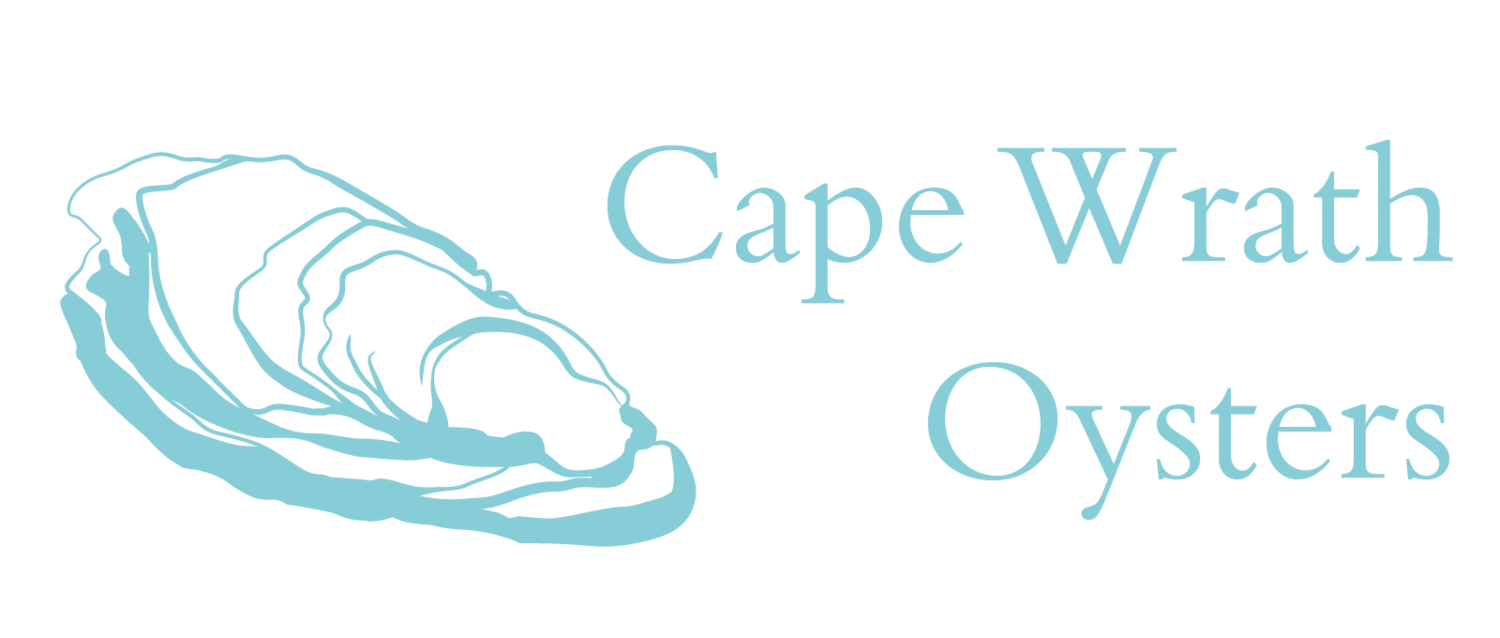Cape Wrath Oysters – packaging details for home deliveries
Our Oysters may be ordered in three different sizes: medium (60-80g each), large (80-100g), and XL (100g up). Oysters’ weight includes the shell and liquor inside it, as well as the oyster meat.
For home deliveries, our oysters are usually packed in punnets.
The oysters will be delivered fresh, live, and in one or more wooden punnets with woodwool around them to keep them stable in the punnet. The punnet has a transparent plastic lid sealed on top and with tape marked Cape Wrath Oysters. This punnet will be inside a polystyrene external box, packed with some ice gel packs to help keep the oysters cool.
Oysters must be refrigerated on arrival. We recommend that you remove the punnet from the polystyrene box and then keep it in the refrigerator. Oysters are live so if you plan on keeping the oysters for several days in the fridge before consuming them then we recommend that you pierce the lid to allow air into the punnet. The oysters should never be allowed to freeze. You may find that the gel packs have defrosted during the journey.
The outside of the postal packaging contains stickers saying Perishable, This Way Up, and Refrigerate on Arrival, plus an envelope containing the address and copy of the invoice, together with our Healthmark stating the harvest date and other statutory information.
If you order two or more punnets, you may receive them as separate packages as it does not always make sense from a cost or packaging perspective to deliver in one package.
For larger orders of more than 24 oysters, please contact us to discuss your requirements. Orders of more than 24 oysters will normally be delivered packed direct into polystyrene boxes with gel packs and woodwool.
Oysters must only be consumed if they are alive at the time of opening them. If an oyster is open, tap it gently. If it is firmly closed already or closes when you tap it then it is alive and ready to eat. You should check all oysters to ensure that they are firmly closed. If they are gaping or remain ajar after tapping then they are probably not alive and should not be eaten.
Allergy and allergen information
Oysters are a marine animal in the shellfish category, which includes crustaceans and molluscs. Oysters are bivalve molluscs (as are e.g. mussels, scallops, clams). People who are allergic to crustacean shellfish may be able to eat other fish, and vice versa. Allergy to crustaceans is more common than allergy to molluscs, though molluscs may be an allergen to some people. An allergy to shellfish can be severe with a risk of anaphylaxis.
